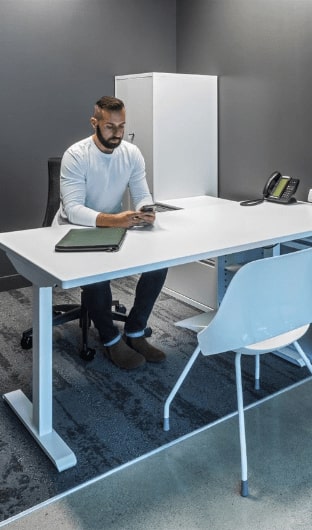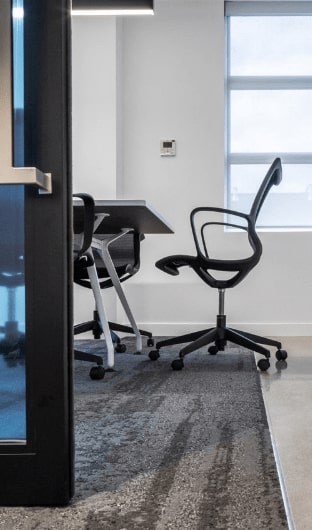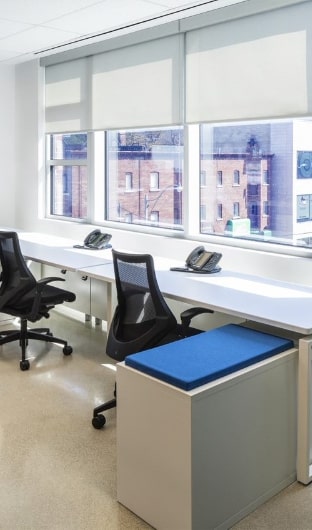
The Impact Of Furniture On Elderly Care Facilities
In elderly care facilities, the role of furniture extends beyond basic functionality. It significantly influences the quality of life for residents, impacting their comfort, safety, and overall well-being. Thoughtfully designed furniture can enhance the environment, promote independence, and improve the health outcomes of elderly residents. As the aging population grows, understanding the implications of furniture choices in these settings becomes increasingly important.
Enhancing Comfort And Support
Comfort is a primary concern in elderly care facilities, where residents often spend extended periods seated or resting. Furniture designed with ergonomics in mind can provide the support and comfort necessary to prevent discomfort and potential health issues. Chairs and beds with adjustable features, for instance, can accommodate the changing needs of elderly individuals, helping to reduce the risk of pressure sores and joint pain.
Upholstered chairs with high backs and armrests offer additional support and stability, enabling residents to sit and rise with ease. Recliners and lift chairs are particularly beneficial, as they allow users to adjust their seating position to enhance comfort and circulation.
Promoting Independence
Furniture can play a crucial role in fostering independence among elderly residents. Designs that prioritize accessibility and ease of use enable individuals to perform daily activities with minimal assistance. For example, tables and chairs with adjustable heights can accommodate wheelchairs and walkers, making it easier for residents to dine and socialize independently.
Functional furniture, such as bedside tables with built-in lighting and easy-to-reach storage, empowers residents to manage their personal belongings without assistance. Additionally, modular furniture systems allow for customization and flexibility, enabling staff to adapt spaces according to individual needs and preferences.
Ensuring Safety
Safety is paramount in elderly care facilities, as falls and injuries are common concerns. Furniture choices can contribute significantly to a safe environment by minimizing hazards and supporting mobility. Non-slip flooring and furniture with rounded edges reduce the risk of accidents, while sturdy handrails and grab bars provide essential support for those with mobility challenges.
Furniture placement also affects safety. Arranging pieces to create clear pathways and ample space for movement can prevent falls and facilitate the use of mobility aids. Chairs and beds with armrests and stable bases offer additional support, helping residents to transition smoothly from sitting to standing positions.
Enhancing Social Interaction
Social interaction is vital for the mental and emotional well-being of elderly residents. Furniture designed to encourage socialization can help create a sense of community and reduce feelings of isolation. Communal spaces with comfortable seating arrangements, such as lounges and dining areas, provide opportunities for residents to engage in conversations and group activities.
Round tables and modular seating options promote inclusivity, allowing residents to easily join group discussions or activities. Additionally, outdoor furniture in gardens or patios can offer a refreshing change of scenery and a space for social gatherings, enhancing residents’ quality of life.
Supporting Cognitive Function
Cognitive decline is a concern in elderly populations, and thoughtful furniture design can help mitigate its effects. Colours and textures play a role in stimulating cognitive function, with vibrant hues and textured surfaces engaging residents’ senses. Moreover, furniture that supports familiarity and routine can aid those with memory impairments. For example, using consistent colour schemes and familiar layouts in common areas can help residents navigate their environment more easily.
Embracing Aesthetic Appeal
The aesthetic appeal of furniture in elderly care facilities impacts residents’ emotional well-being and sense of dignity. Attractive, well-designed furniture creates a welcoming and homely atmosphere, which can improve residents’ quality of life and satisfaction with their living environment. Incorporating elements of residential design, such as warm colours and natural materials, facilities can create spaces that feel less institutional and more like home.
Encouraging Family Engagement
Furniture that accommodates family visits can strengthen connections between residents and their loved ones. Comfortable seating arrangements in private rooms and common areas facilitate family gatherings, creating a welcoming environment for visitors. Tables and chairs that are easy to rearrange allow families to personalize their interaction space, enhancing the visit experience.
The impact of furniture on elderly care facilities is profound, affecting residents’ comfort, safety, and well-being. Prioritizing ergonomic design, accessibility, safety, and aesthetic appeal, facilities can create environments that enhance residents’ quality of life and promote independence. As the elderly population grows, the thoughtful selection and arrangement of furniture will remain a key component in providing compassionate and effective care. Connect with Harkel Office – a leading healthcare furniture dealer in Ontario, providing Canadian-made furniture to create your ideal elderly-friendly facility.





